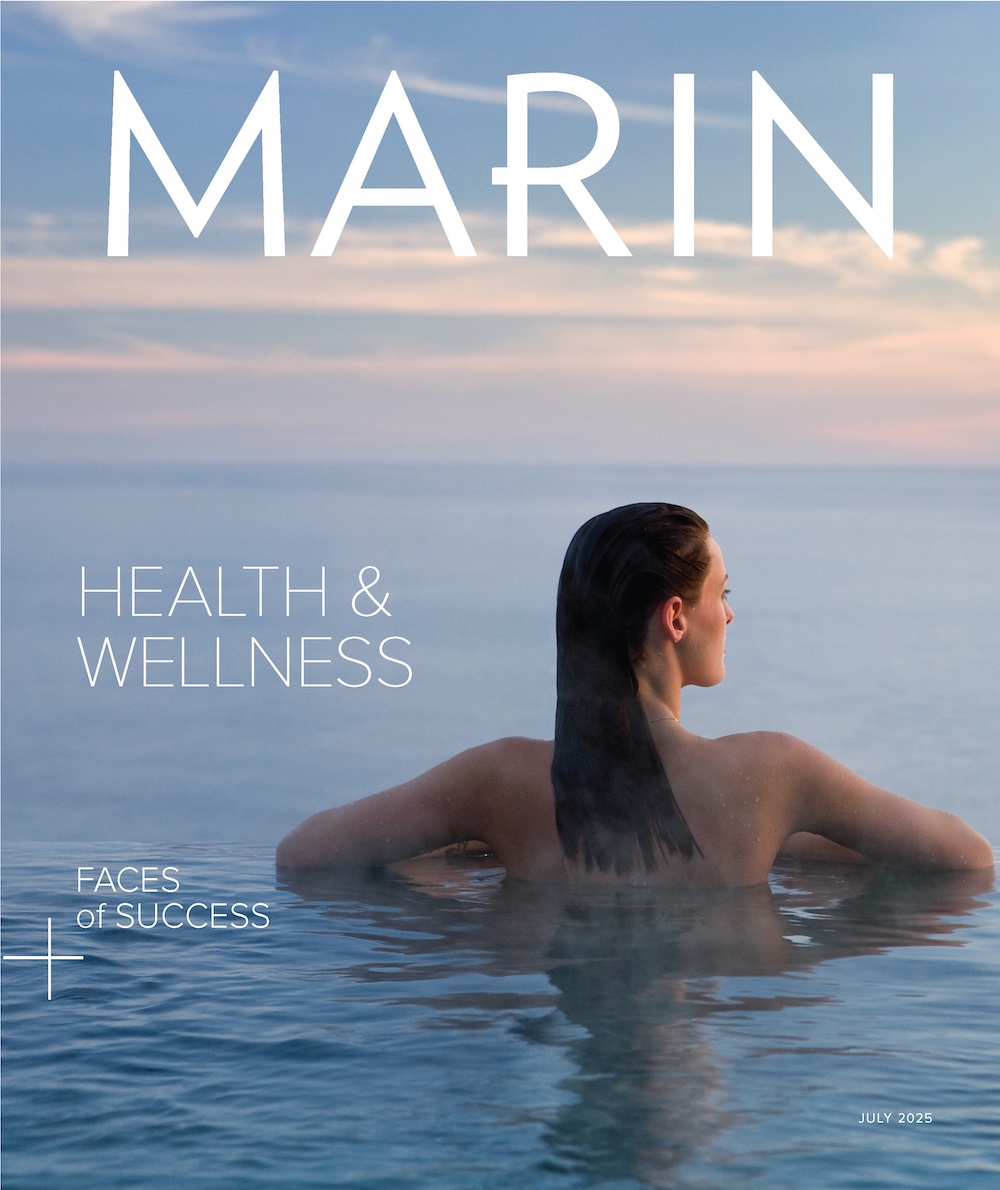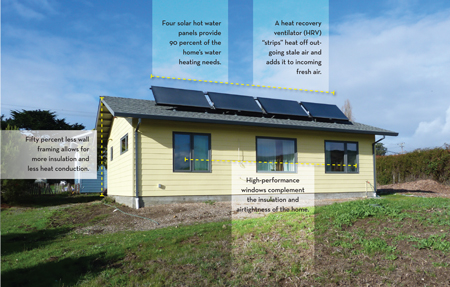From the outside, it’s nothing special. It’s yellow, small and box-like. However, inside it’s comfy and cozy: the temperature is a constant 74 degrees, there’s plenty of hot water, and the air is fresh and clean. “This is the first Passive House in California to be built from the ground up,” says San Anselmo architect James Bill, of Zero Impact Architecture, or ZIA. “At most, its utility costs are 10 percent of a normal bill.” A Passive House, explains Bill, retains heat so well that heat generated from humans, lightbulbs and appliances negates the need for a furnace. “This house is so insulated and airtight that 540 watts of energy keeps it warm in winter,” he adds. “That’s less energy than a small hair dryer consumes at half speed.”
Not only is this home an energy miser, it’s also affordable. Located on Shoreline Highway in Point Reyes Station, the home was developed by the Community Land Trust Association of West Marin, or CLAM. “We developed the property for low-income families working in West Marin,” says CLAM’s executive director, Sam Grant. “We have invested $800,000 in the land, the new Passive House, and a second unit that was remodeled to Passive House standards.”
Half that amount, adds Grant, came from individuals living in West Marin. The rest came from grants, reserves and small donations. The 750-square-foot Passive House rents for $925 a month to a young couple who had their first child the day after moving in. She is a waitress in Point Reyes Station; he is a cook in nearby Olema. CLAM’s goal is to create 50 units of affordable passive housing in West Marin by 2025.
In Germany currently there are over 20,000 Passive Houses, built under the PassivHaus low-energy building system. “There are three elements to Passive House strategy,” says Bill. “The first is insulation, not only in the walls and roof, but under the slab as well.” Also important, he says, is airtightness. “This home is four times tighter than what the Environmental Protection Agency (EPA) considers energy efficient,” he adds. A third element is called heat recovery ventilation. “With a heat recovery ventilator, incoming and outgoing air streams pass by each other, and the hotter one gives heat to the cooler airflow,” Bill says. “Thus, in winter, almost all the heat of the outgoing, or exhausted, air is transferred to incoming air. And in summer, the opposite is true, which keeps the home cooler.”
Constructing California’s first Passive House involved numerous volunteers as well as dozens of tradespeople who worked at well below their normal contract rates. “There wasn’t anything big and fancy about this project; the end result was a super-low-energy home that’s good for the planet … and good for the community,” concludes its contractor, Terry Nordbye of Inverness. “”It really changed my life—I want to do more homes just like it.”


